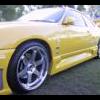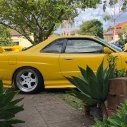Announcements
-
Similar Content
-
Latest Posts
-
can someone tell me what type the stock injectors are on a 98 rb25det neo engine? all aftermarket intakes require style /size injector pictured below...I need to know what stock engine has. and if they are compatible, or what mods would have to be done. style of intake I am looking at https://www.ebay.com/itm/325396084484?_trkparms=amclksrc%3DITM%26aid%3D1110013%26algo%3DHOMESPLICE.SIMRXI%26ao%3D1%26asc%3D264094%26meid%3D5341792cb2134ae08e62edba0106c479%26pid%3D101196%26rk%3D1%26rkt%3D12%26sd%3D266154719116%26itm%3D325396084484%26pmt%3D1%26noa%3D0%26pg%3D2332490%26algv%3DPromotedRVIPbooster%26brand%3DCustom&_trksid=p2332490.c101196.m2219&itmprp=cksum%3A3253960844845341792cb2134ae08e62edba0106c479|enc%3AAQAJAAABICwDxH%2FaslyJlxG5OwCzDVs5U6ncPDDFP4HCfgb8bXFQagmnGWQKp%2F5LAV0adQfbjzLOMM5V9WdEAXvNCLcpgDrzFvXcL7dVf5HawGKZAaaGFBnv4h4bnbRe6OSYvS8sL7PFPrxKj1Ffjdm6cYtU05cBROA0QdRKCNqPtF1hizoeiccNy6dwbcFsfX6syZa5MfzX2aEOofmNIehOqxSmtQvJliZHTgLy2BTDxXv5Zq9atpb1m%2BVtBHabBK8Wn6U2uPOAs71mwVWNmc1t4ZnHatrqKLQC6hCPTC8NW3QzFTCUvLg%2FWU4IZ1IAyPK288DdviqpLaN9sgbF3Ia0z6zXqLkqPyXbN7irzRC0HP2kjwHM8czF9PjWtRHDVNb1AiU9%2FQ%3D%3D|ampid%3APL_CLK|clp%3A2332490&itmmeta=01HWN3YNH6HQ8PEG4RPPSH1HSB thanks
-
Hi Experts, My father’s car Mahindra Jeep CJ500 2.5L, 1986 model. Currently registered in Overseas. Want to replace the engine in Overseas with Mahindra Bolero 2016 2.5 L turbo used engine ( not endorsing new engine number on Rego paper in Overseas. Then Importing to NSW. Is this car eligible for NSW registration if able to submit all compliance certificates? Regars.
-
By Dose Pipe Sutututu · Posted
I know you said no amps in the boot, but there's enough space next to the battery for a pair of modern small foot print amps OR one small 6x channel amp. This is what I did over 6 years ago, used 2x marine amps (no decent 6x or 5x channel amps back then) -
By Dose Pipe Sutututu · Posted
Pressure delta gauge is pure pron. No guessing, no excuses. -
By GoHashiriya · Posted
That’s the one. Yeah, the seller has confirmed the base ECU is from a manual car. To be honest, I’m only worried about the TCS light being illuminated due to registration here in NL - unsure on rules. Back in Japan, we weren’t allowed to have any permalit error-related lights (or so my shaken guy said). Looks like this Nistune is the way to go then, appreciate it GTSBoy, and the others that chimed in.
-







Recommended Posts
Create an account or sign in to comment
You need to be a member in order to leave a comment
Create an account
Sign up for a new account in our community. It's easy!
Register a new accountSign in
Already have an account? Sign in here.
Sign In Now